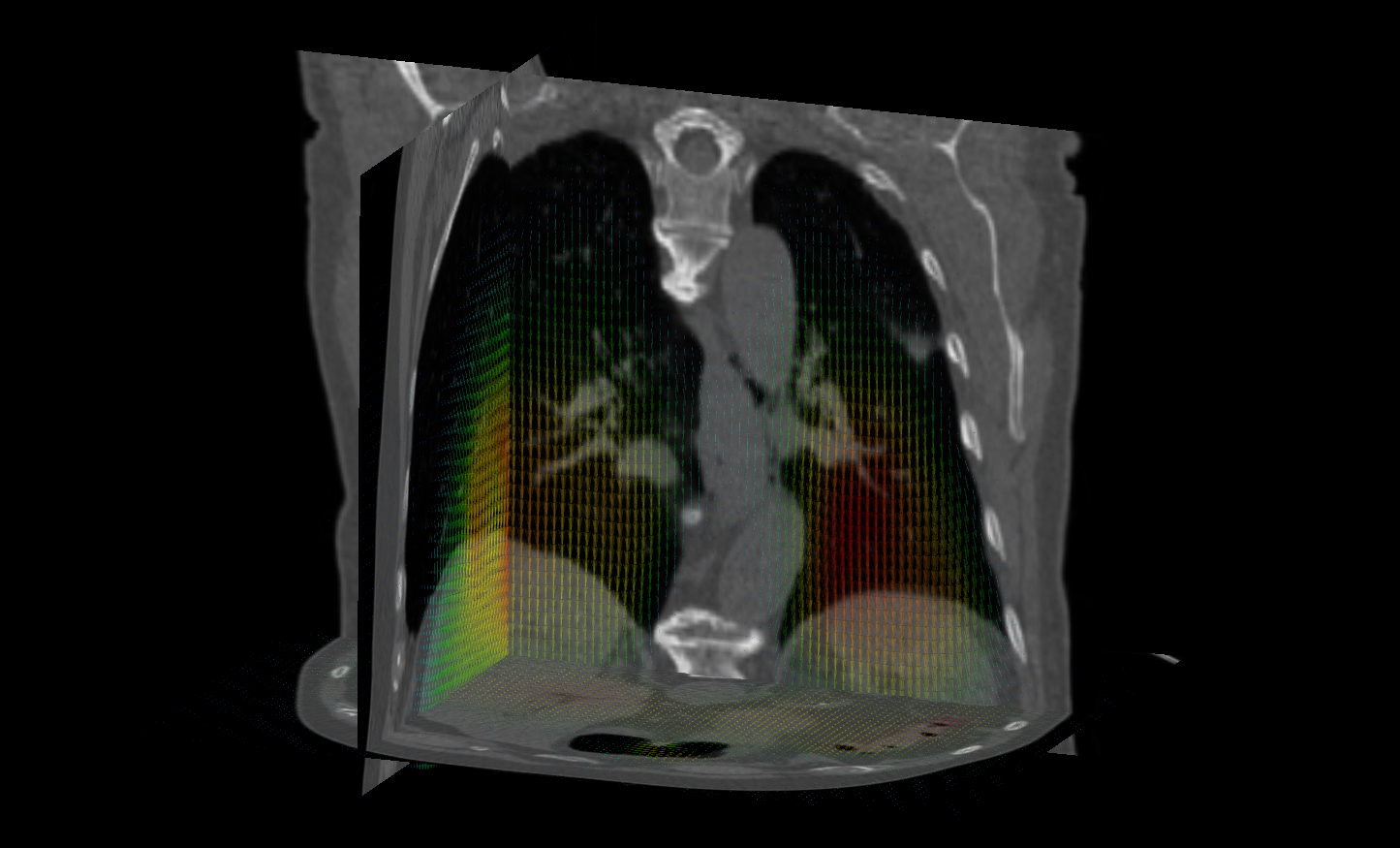 New research being conducted at the Scientific Computing and Imaging Institute holds the potential to increase the accuracy of targeted treatments for tumors in the lungs. Currently, motion caused by the patient's breathing introduces motion artifacts when imaging lung tumors. The inherent breathing motion also limits the precise targeting of radiation therapy for treating lung cancer.
New research being conducted at the Scientific Computing and Imaging Institute holds the potential to increase the accuracy of targeted treatments for tumors in the lungs. Currently, motion caused by the patient's breathing introduces motion artifacts when imaging lung tumors. The inherent breathing motion also limits the precise targeting of radiation therapy for treating lung cancer. This research plays a role in tumor tracking during treatment for lung cancers. This is important as the current treatments deliver radiation to the tumor including a large area of surrounding healthy lung tissue, leading to adverse radiation side effects. The increased ability to map the motion of the tumor using the imaging procedures being developed will drastically increase accuracy of the radiation treatment to be administered. Decreasing the radiation exposure of the healthy surrounding tissue will decrease the side effects and improve recovery from radiotherapy treatments, while maintaining current success rates. The researchers use a comprehensive approach that accounts for all the changes at every step in the radiation therapy process, thereby significantly reducing the dose to the normal portions of the lung and to other critical organs.
This research was recently presented by Markus Foote, a graduate student in Sarang Joshi, PhD's lab. In "Rank Constrained Diffeomorphic Density Motion Estimation for Respiratory Correlated Computed Tomography", a novel motion estimation algorithm was presented which aids in determining the movement of organs from breathing while the patient is having images taken. This algorithm corrects for errors in previous studies and provides a more accurate location in image series of lung tumors. Understanding how much movement from organs occurs in these images is critical to increasing the accuracy of treatment and decreasing morbidity and mortality in these patients.
This work is supported by a grant from the National Cancer Institute (Project #5R01CA169102-02) in collaboration with Amit Sawant, PhD, at the University of Maryland, Baltimore.
